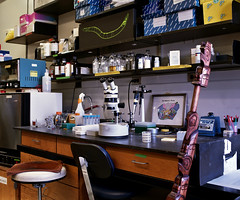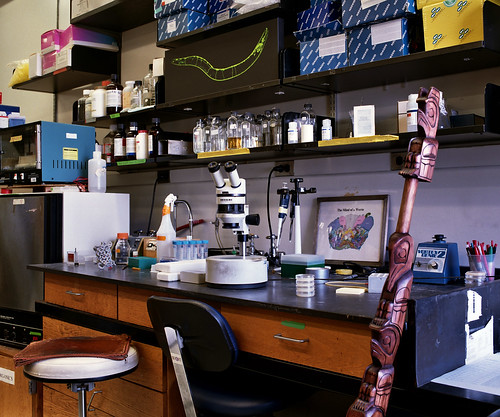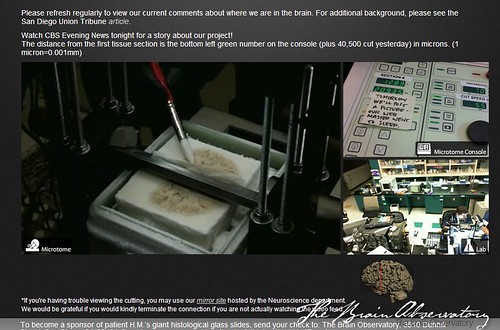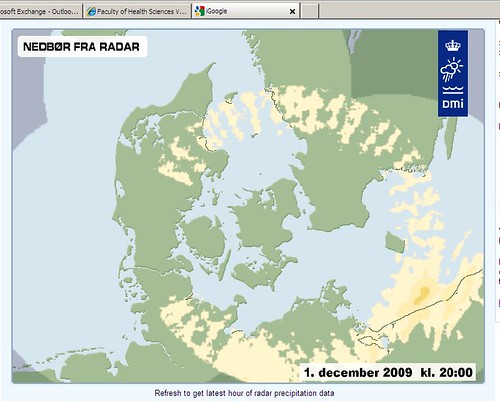 Seed is running a series of monthly portraits of workbenches of interesting people (like Oliver Sacks, a renowned bat expert, an industrial designer, etc.)
Seed is running a series of monthly portraits of workbenches of interesting people (like Oliver Sacks, a renowned bat expert, an industrial designer, etc.)
The latest portrait, published in yesterday’s online issue, is the lab bench of Martin Chalfie, one of the three who won a medical Nobel last year for the discovery of green fluorescent protein (GFP).
The image on seedmagazine.com is interactive (of course) — that is, you can blow up details with accompanying texts.
Nifty, but …. what struck me when I first saw the image was that Chalfie’s lab bench doesn’t look authentic. Take a look at the magnified version below — it is way too neat and tidy! It looks like the photographer has cleaned up and arranged everything in orderly fashion before shooting the image.
Then I read the caption to the small glass bottles detail on the shelf above the microscope — it explains why:
I have to admit, I haven’t done a lot of experiments recently. I spend most of my time in my office next door, working on papers or talking with post-docs about their studies.
That’s the fate of most senior scientists — and Seed doesn’t seem to have realised that this fact corrupts the authenticity of the image. The difference between a used and not-so-much used lab bench is subtle. But it is there. Maybe they could have presented it as ‘the dead workbench of Martin Chalfie’ instead.
So, please, in the forthcoming issues, let’s get some images of lab workbenches that reflect some real lively untidy 24/7 lab work.
(thanks to Bertalan Meskó for the tip about Seed‘s article; that said, however, Bertalan wrongly, in my view, believes that the image “lets you look behind the scenes of the workbench of a famous and successful scientist”. That’s exactly what it does not — it’s lets you see pure surface, no behind.)



 We have just recruited
We have just recruited 